
GRAINS OF SAND MAGNIFIED
At the Beach
Sand grains magnified 110-250 times reveal each grain is unique.
(SCROLL DOWN)
*
*
*
*
*
*
*
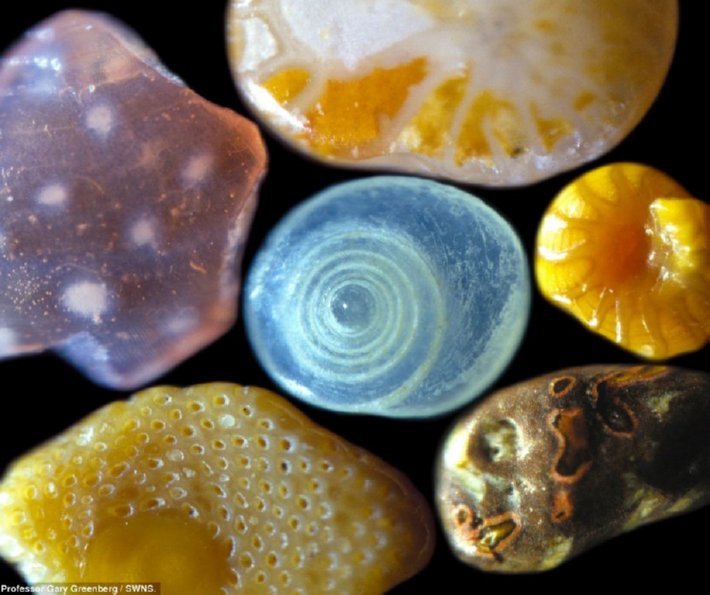
The tip of a spiral shell has broken off and become a grain of sand. After being repeatedly tumbled by action of the surf this spiral sand grain has become opalescent in character. It is surrounded by bits of coral, a pink shell fragment, a foram (a type of protozoa) and volcanic material. Photo copyright Dr. Gary Greenberg.
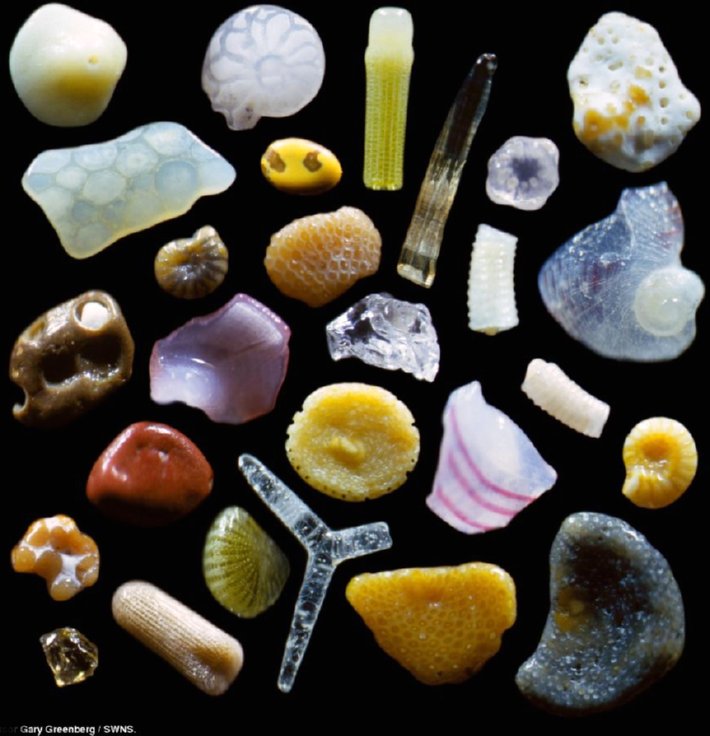
A handful of sand grains selected from a beach in Maui and arranged on a black background. Photo copyright Dr. Gary Greenberg.
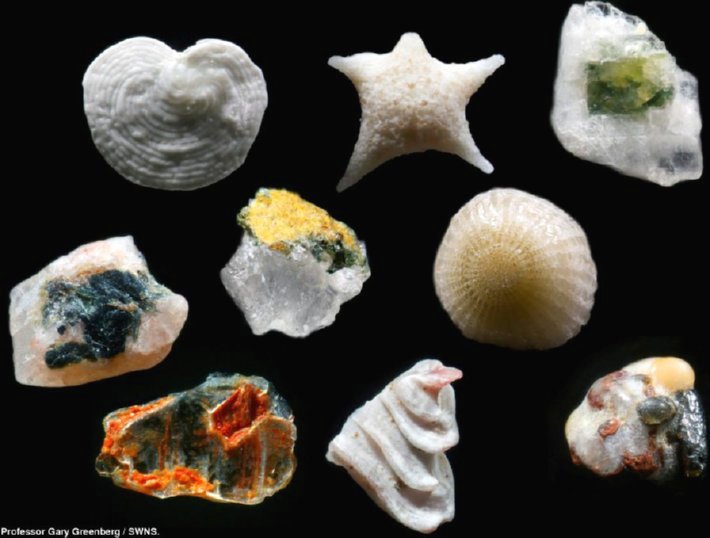
Magnified 250 times. Every grain of sand in the world is unique when viewed through a microscope.
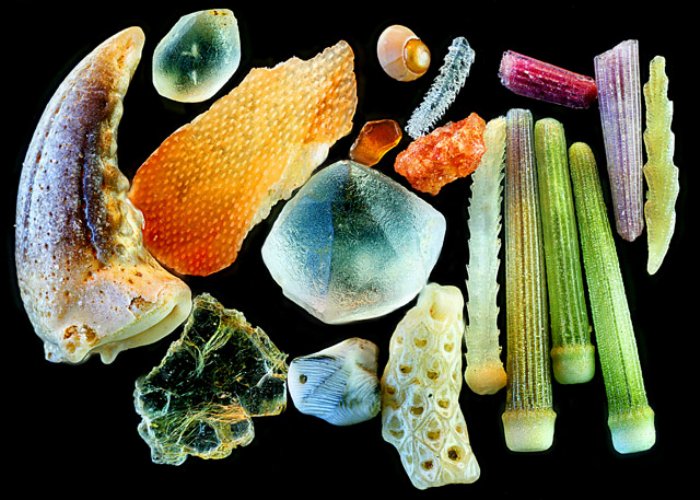
Sand Magnified by Yanping Wang www.nikonsmallworld.com
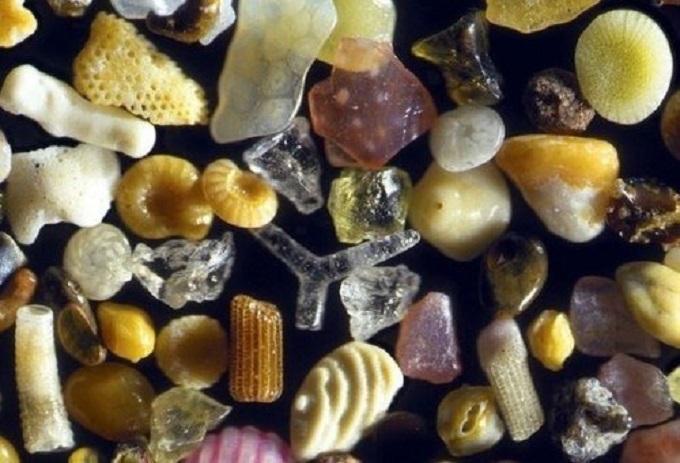
Sand Magnified 250x.
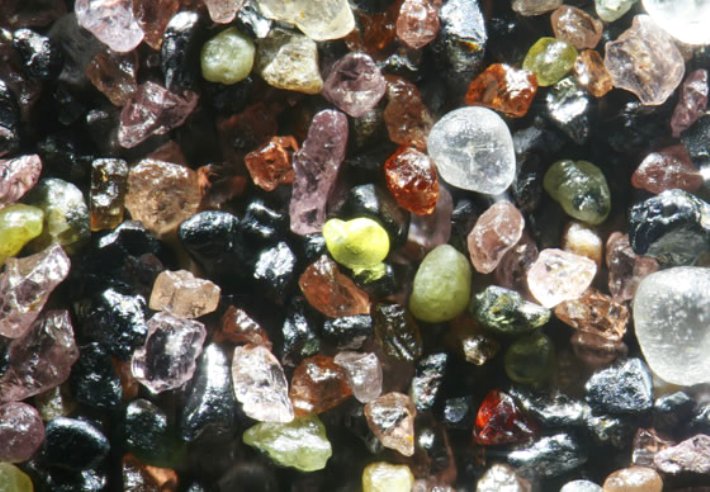
The glacially deposited sands around Lake Winnibigoshish, Minnesota, contain abundant sediments from the igneous and metamorphic minerals of the Lake Superior basin. A sample includes pink garnets, green epidote, iron-rich red agates, black magnetite, and hematite. Image Copyright © 2008 Dr. Gary Greenberg.
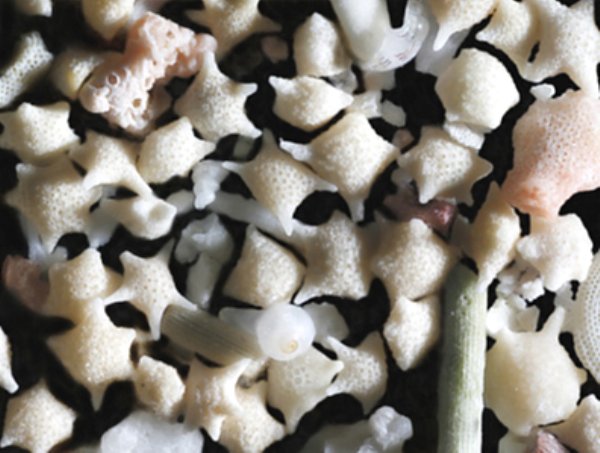
Puffy Stars -- Star-Shaped Sand Grains from Okinawa. These tiny foram, a type of protozoa, secrete beautiful star-shaped, calcium carbonate shells, or tests. www.sandgrains.com
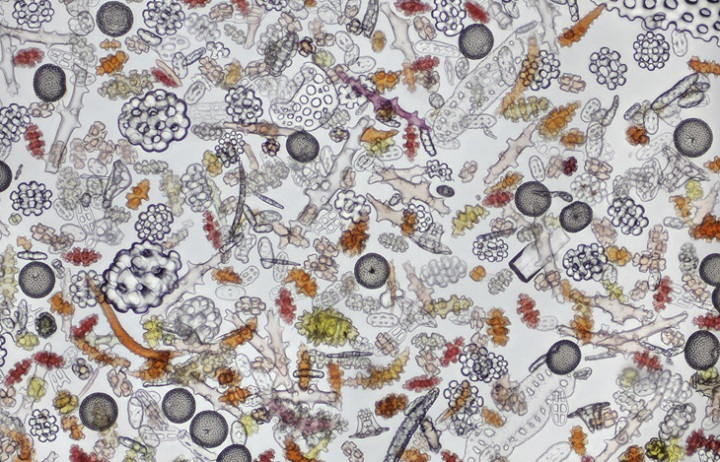
Coral Sand magnified 100x using
transmission electron microscopy, brightfield mode.
By Dr. David Maitland, Feltwell, UK.
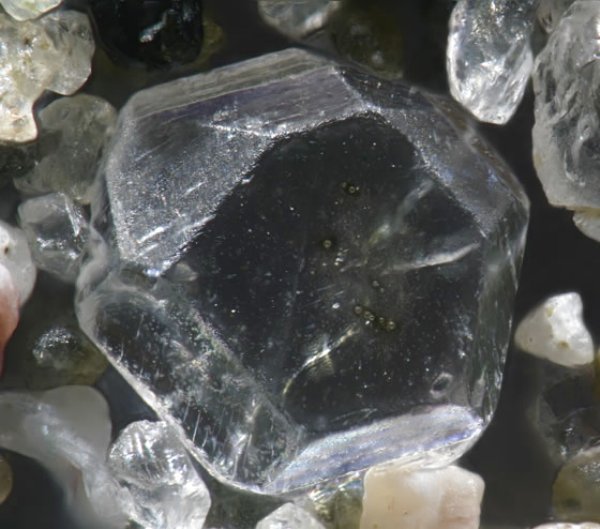
Many grains of sand are tiny crystals (shiny, flat sided solids). Sand from Zushi Beach, Japan, contains what looks like a sapphire crystal. The crystal is larger than the surrounding grains and has survived eroding because of its hardness and quality.
Image Copyright © 2008 Dr. Gary Greenberg
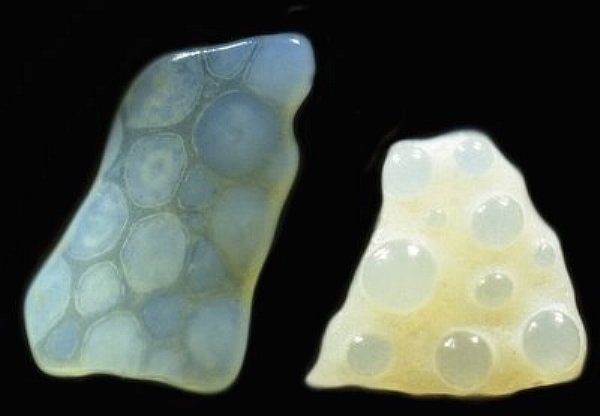
Fragments of baby sea urchin shells. Biogenic sand, which forms from the remains of marine life, is the major ingredient of many tropical beaches. (Magnification 100x) popgive.com

A magnified view of the tropical beach sand from the Caribbean island of St. John (U.S. Virgin Islands). The grains include porous fragments of brightly-colored corals, minute foraminiferan shells, fragments of sea shells and shiny, star-shaped sponge spicules. waynesword.palomar.edu
VIDEO: http://www.inspirationgreen.com/index.php?q=magnified-grains-of-sand.html
A Grain of Sand - Nature's Secret Wonder
The Amazing Microphotography of Dr. Gary Greenberg
Every grain of sand is a jewel waiting to be discovered. That's what Dr. Gary Greenberg found when he first turned his microscope on beach sand. Gemlike minerals, colorful coral fragments, and delicate microscopic shells reveal that sand comprises much more than tiny beige rocks.
Author and photographer Dr. Gary Greenberg is a visual artist who creatively combines art with science. He has a Ph.D. in biomedical research from University College London and holds 17 patents for high-definition 3-D light microscopes. Dr. Greenberg lives in Haiku, Hawaii.
Carl Sagan famously remarked "the total number of stars in the universe is greater than all the grains of sand on all the beaches on the planet Earth." It is estimated that the total number of 'all' grains of sand on the whole planet could be approximately 2000 billion billion. Scientists still believe there are more stars in the Universe. hassers.blogspot.com
And as to planets:
If a grain of sand represented an entire galaxy; so each grain of sand, or galaxy, contains 100’s of billions of stars, you would need to fill six rooms full of sand to contain all the galaxies in the known universe. If you drilled a tiny whole in one of the grains of sand, 'our Milky Way universe,' that would be the area that we have been capable of seaching for planets so far. 534 planets have been discovered so far... directedplay.com
VIEW VIDEO
http://www.inspirationgreen.com/index.php?q=magnified-grains-of-sand.html
